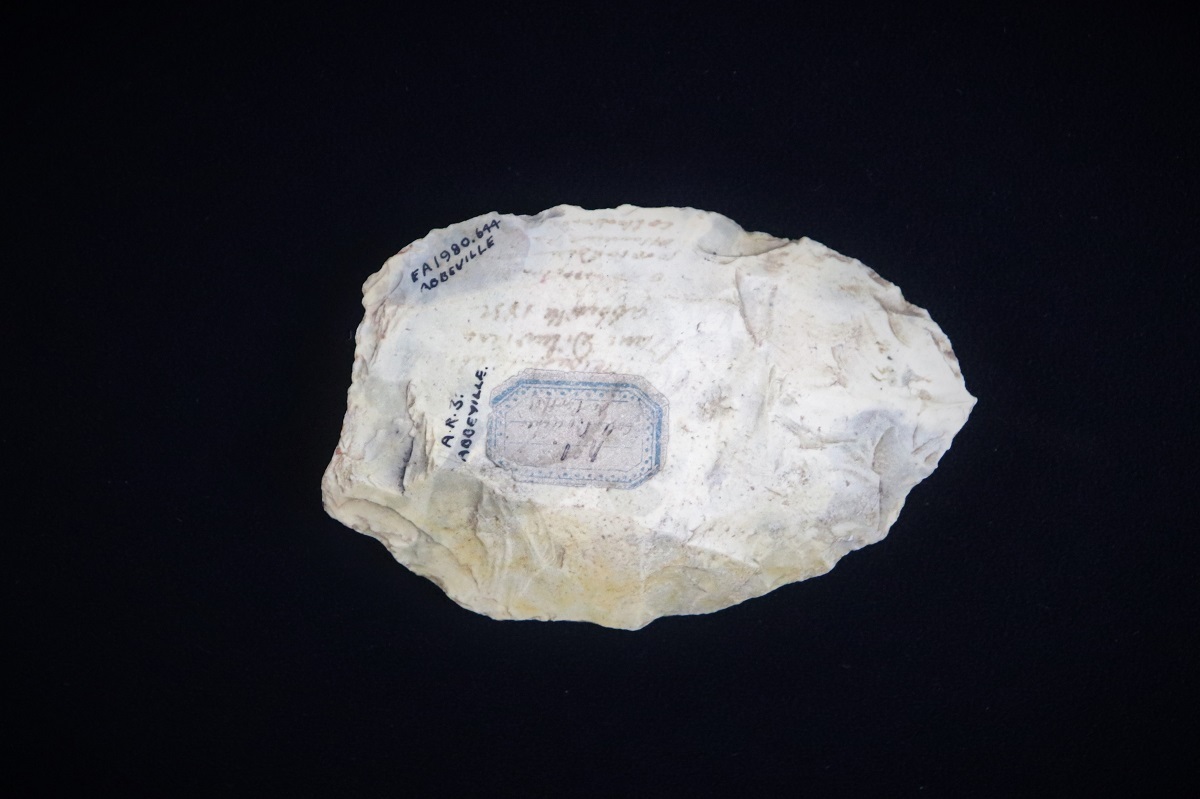This Acheulean hand axe is one of the oldest human-made objects in the Museum. Although the exact date it was crafted is unknown it could be up to 450,000 years old and is associated with the dispersal of our hominin ancestors out of Africa.

The Acheulean stone tool industry originated in East Africa about 1.76 million years ago, and the tools were used throughout much of the Old World during the Lower Palaeolithic (Early Stone Age). The industry continued well into the Middle Palaeolithic, approximately 300,000–200,000 years ago, and is generally associated with two different hominin species: Homo erectus/ergaster and Homo heidelbergensis.
Both Neanderthals and early modern humans also created and used Acheulean tool types. Characterised by large bifacially reduced handaxes or cleavers such as this one, the Acheulean industry is remarkable for its persistence over such a long period of time.
The Acheulean is named for the type site of Saint Acheul on the Somme River in northern France. Discovered in the mid-nineteenth century by Jacques Boucher de Crèvecoeur de Perthes, the association of these tools with extinct megafauna such as rhinoceros and mammoth contributed to the development of theories about the antiquity of human occupation in Europe. These theories were particularly influential on Julius von Haast during his investigations of sites in New Zealand that contained flaked stone tools in association with the extinct moa.
You might be asking how on earth 450,000 year old stone tools from Europe ended up in Canterbury Museum. The short answer is moa bones! This particular specimen collected by Boucher de Perthes was exchanged for moa bones in 1877 with either the Musée de Toulouse or the Musée de Lyon.





